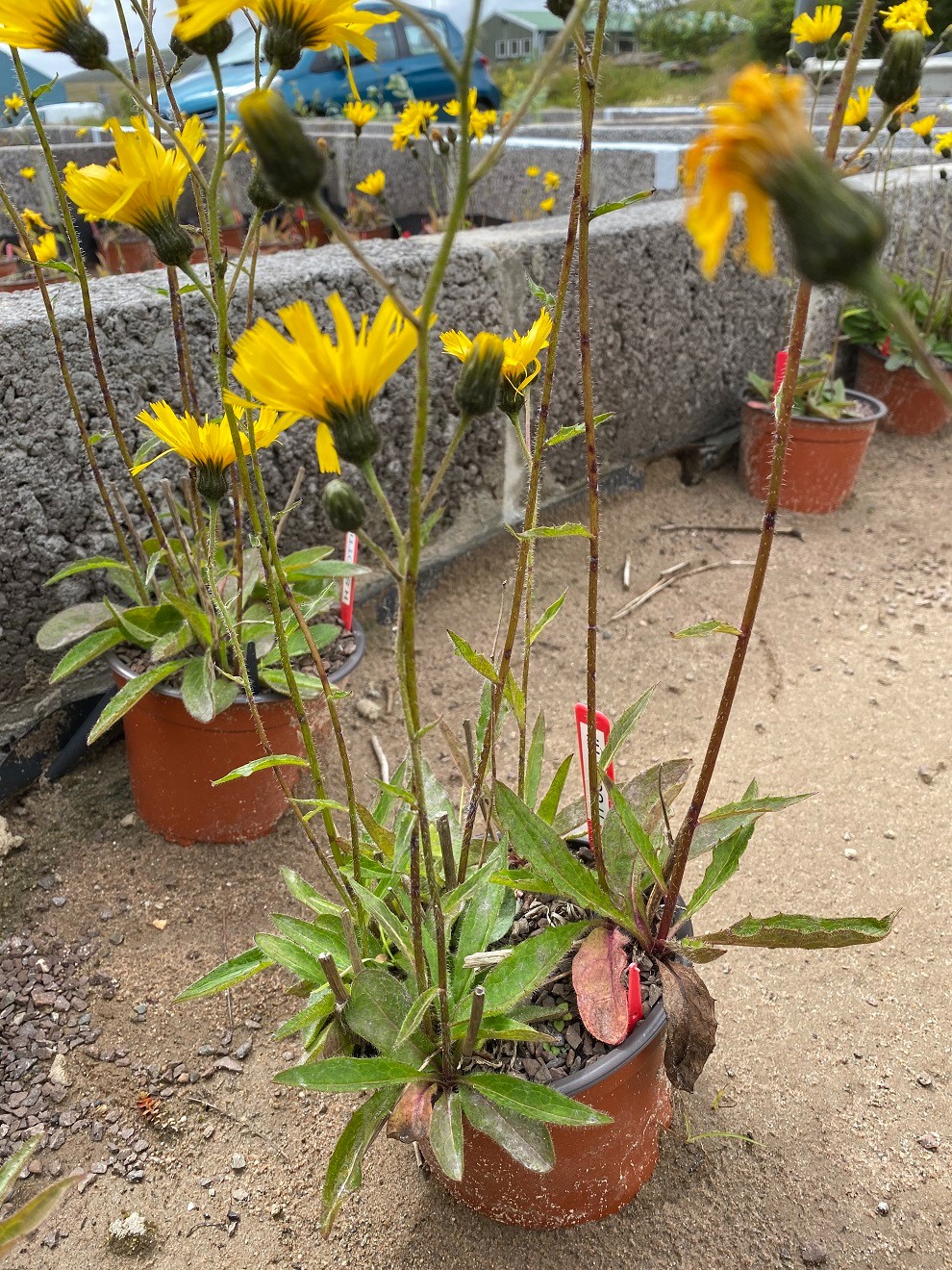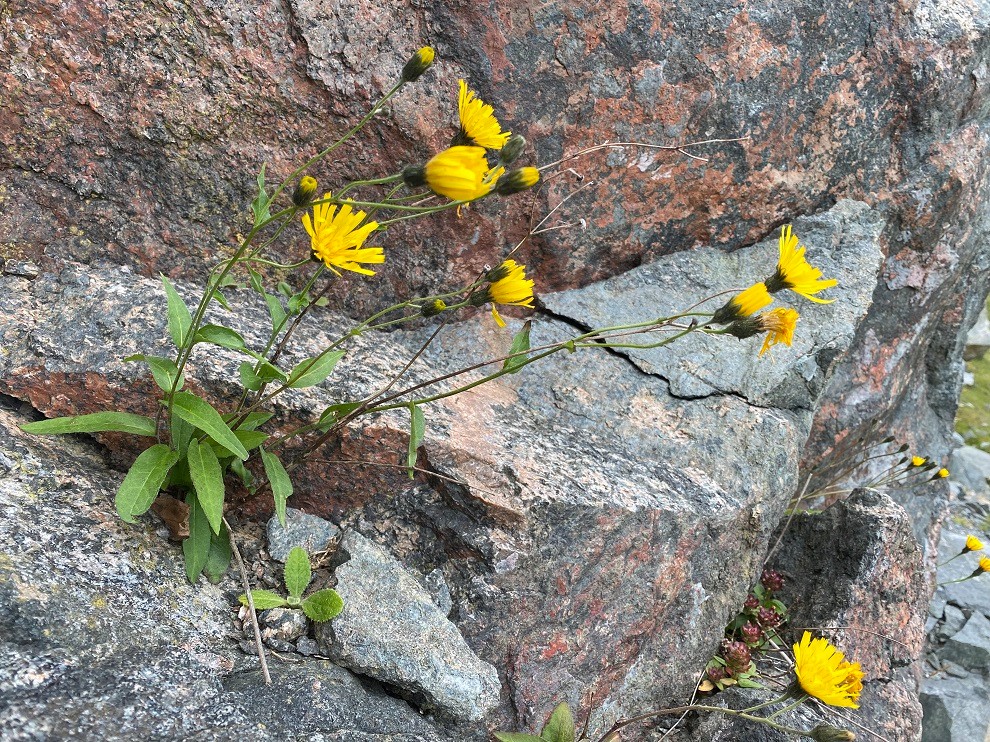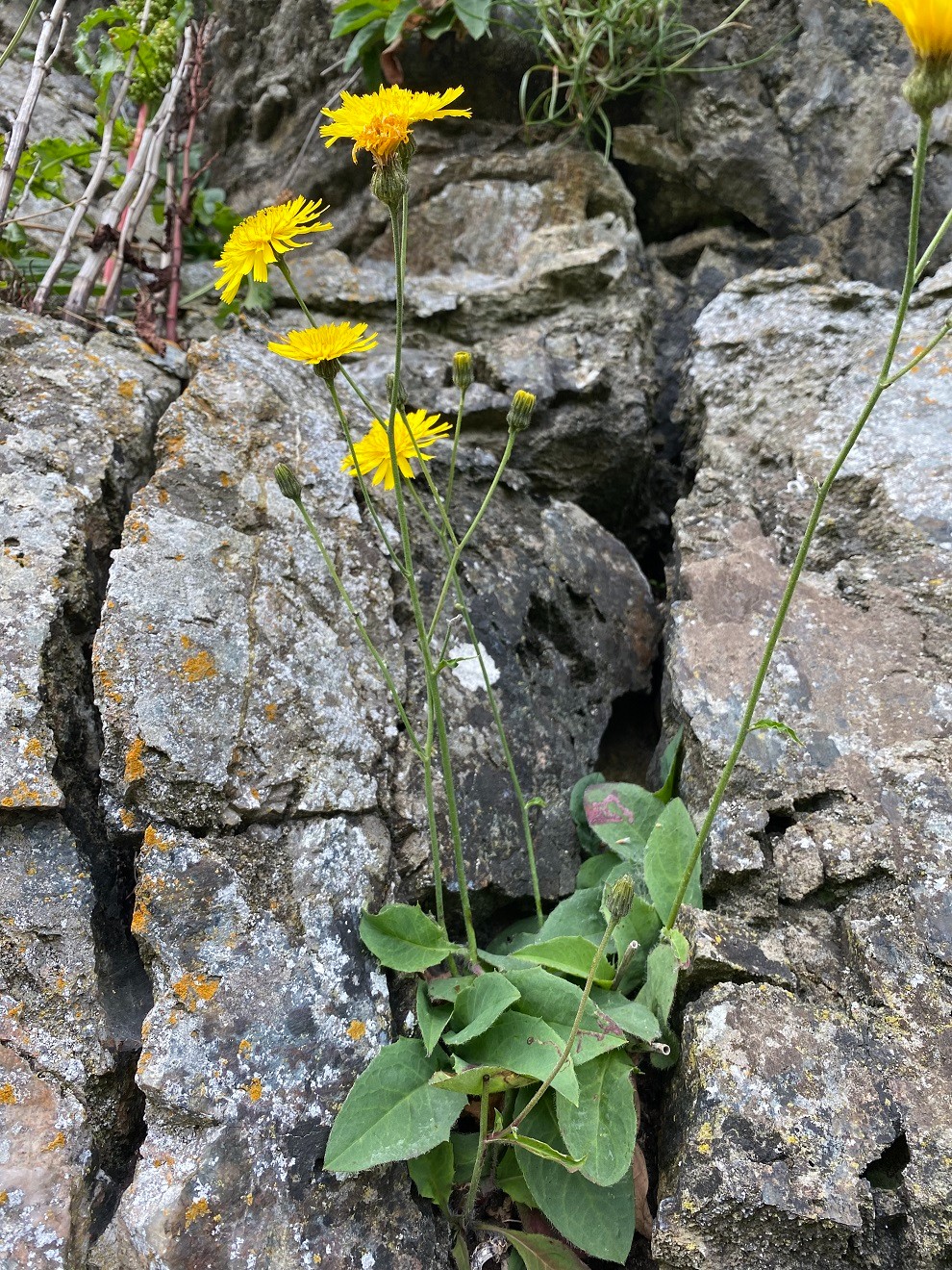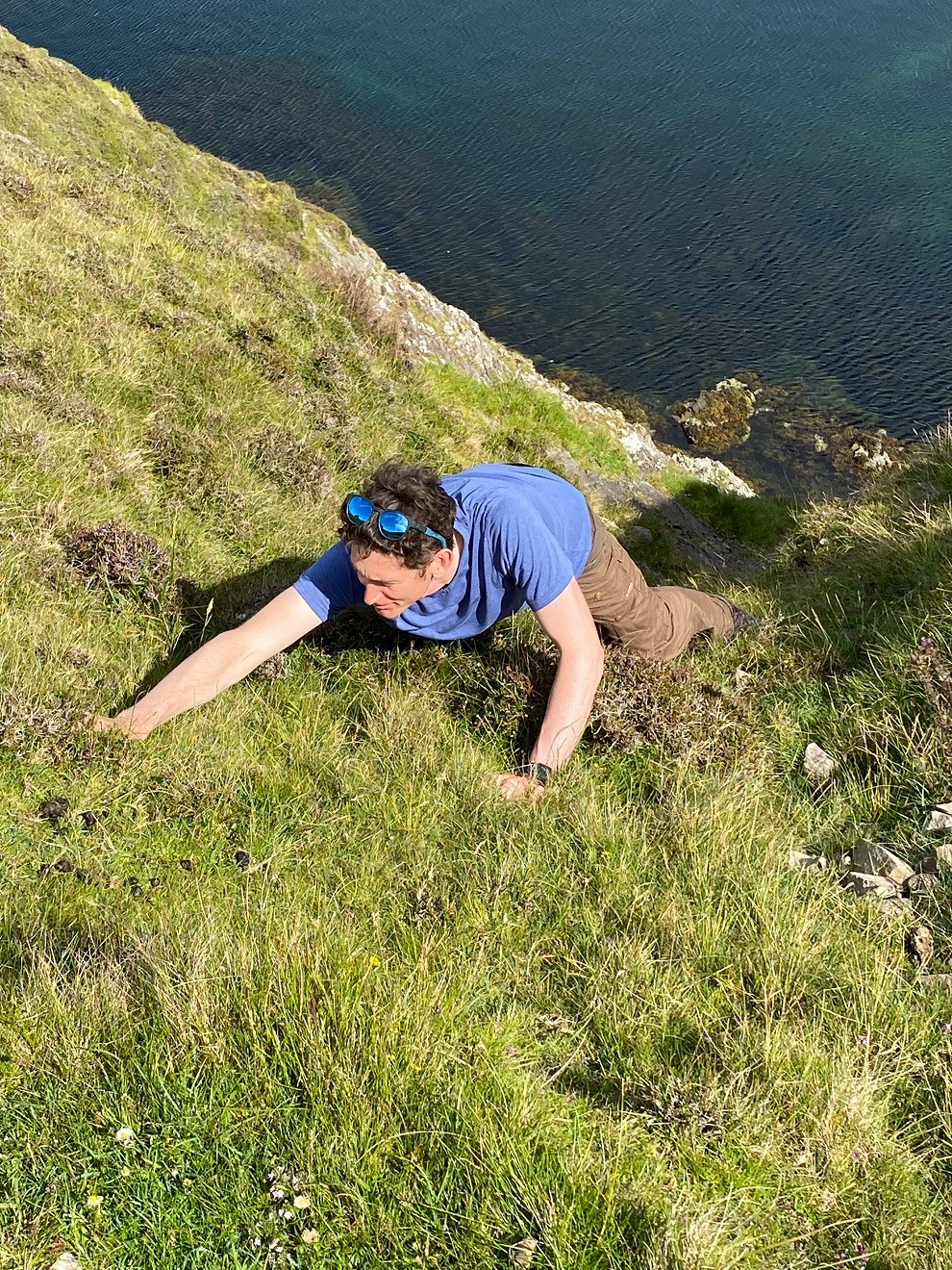Hunting Hawkweeds
Published: 27 July 2022
July is the month that Shetland’s hawkweeds flower.

Shetland Amenity Trust's woodland squad
look after small numbers of all Shetland's
endemic hawkweeds at their horticultural
unit in Lerwick.These plants can be used to
supplement wild populations if they suffer a
decline, or worse still, are lost completely.
It may not be the most attractive name and in truth many folk would pass them off as just another dandelion but Shetland’s hawkweeds really are unique. Some 25 species are found in the islands but 18 of these are found nowhere else on the planet! Many are restricted to just a handful of sites; in some cases just one site.

The Cliva Hill Hawkweed was rescued from extinction by local botanist
Walter Scott. Plants from the Shetland Amenity Trust's horticultural unit
have been translocated back to the wild and now flourish in a quarry close
to its original site
One species (the Cliva Hill Hawkweed) became extinct, lost when the cliff was blasted away at Mavis Grind for the new road. Well, not quite lost. Local botanist Walter Scott collected a few specimens before the hill was blown away and managed to rear them at his home in Scalloway. The offspring of these were handed to Shetland Amenity Trust and the Trust’s woodland squad has reared them, along with all the other endemic species, to ensure their future is safe. More than 10 years ago the Cliva Hill Hawkweed was reintroduced back into the wild in a quarry close to the site where it was originally found and this week it was pleasing to see over 50 in flower there.
Image: Three different species of hawkweed grow on this outcrop in the west mainland, Growing in areas that are free from grazing means that hawkweeds are often found alongside relict native trees like Aspen, or flowering shrubs like Dog Rose and Honeysuckle.
Every five years Trust staff visit the sites where Shetland’s rarest hawkweeds grow to see how their populations are faring – if they are decreasing then we have the option of introducing some of the plants raised at the horticultural unit back into the wild to give the populations a necessary boost. This is all part of a National Species Action Plan to safeguard the UK’s biodiversity.
Image: Nearly all of Shetland's hawkweeds grow on cliffs, inland rock faces, in ravines or on island holms where they can't be nibbled by sheep. They cannot survive sustained grazed. Counting them can therefore be a little challenging!



